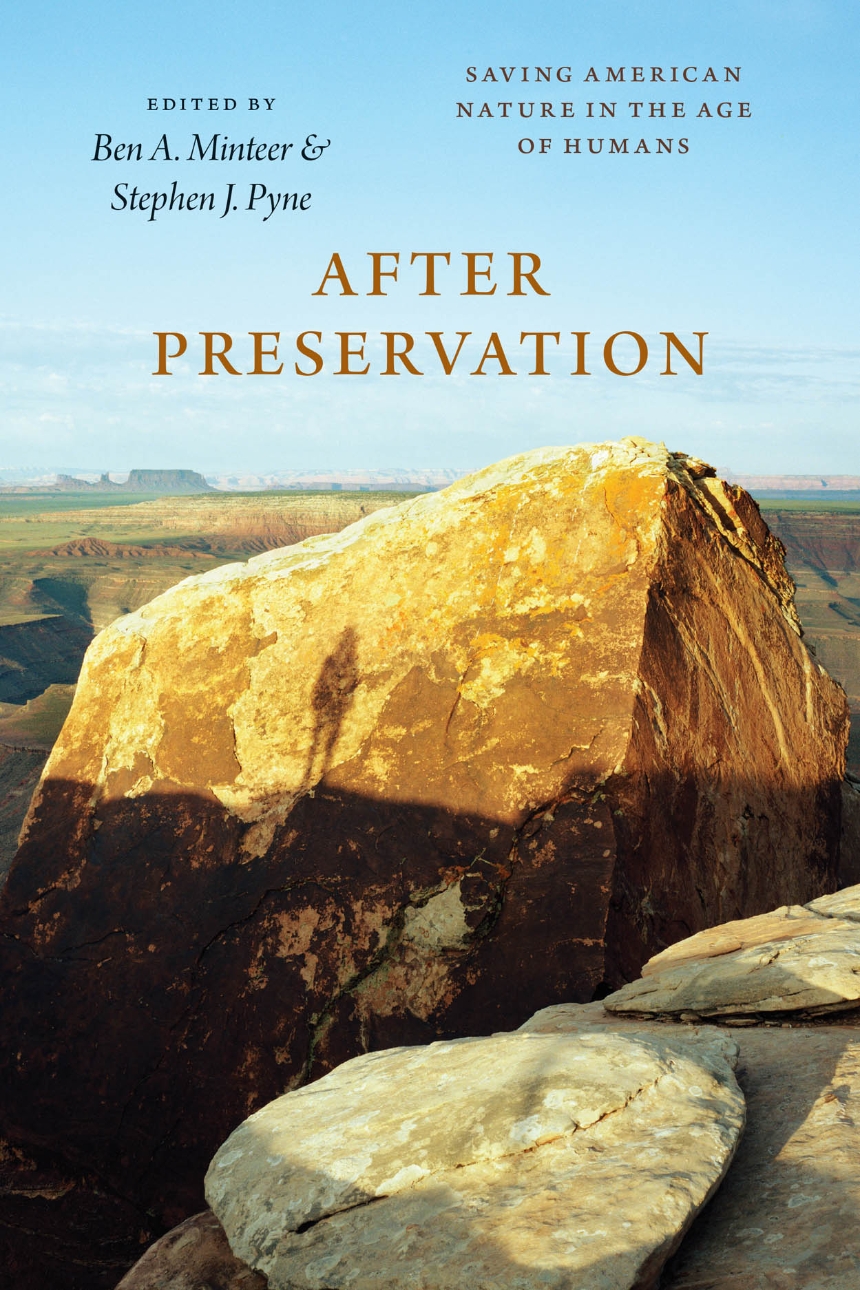After Preservation
Saving American Nature in the Age of Humans
After Preservation
Saving American Nature in the Age of Humans
Ben A. Minteer and Stephen J. Pyne bring together a stunning consortium of voices comprised of renowned scientists, historians, philosophers, environmental writers, activists, policy makers, and land managers to negotiate the incredible challenges that environmentalism faces. Some call for a new, post-preservationist model, one that is far more pragmatic, interventionist, and human-centered. Others push forcefully back, arguing for a more chastened and restrained vision of human action on the earth. Some try to establish a middle ground, while others ruminate more deeply on the meaning and value of wilderness. Some write on species lost, others on species saved, and yet others discuss the enduring practical challenges of managing our land, water, and air.
From spirited optimism to careful prudence to critical skepticism, the resulting range of approaches offers an inspiring contribution to the landscape of modern environmentalism, one driven by serious, sustained engagements with the critical problems we must solve if we—and the wild garden we may now keep—are going to survive the era we have ushered in.
Contributors include: Chelsea K. Batavia, F. Stuart (Terry) Chapin III, Norman L. Christensen, Jamie Rappaport Clark, William Wallace Covington, Erle C. Ellis, Mark Fiege, Dave Foreman, Harry W. Greene, Emma Marris, Michelle Marvier, Bill McKibben, J. R. McNeill, Curt Meine, Ben A. Minteer, Michael Paul Nelson, Bryan Norton, Stephen J. Pyne, Andrew C. Revkin, Holmes Rolston III, Amy Seidl, Jack Ward Thomas, Diane J. Vosick, John A. Vucetich, Hazel Wong, and Donald Worster.
240 pages | 18 halftones, 1 line drawing | 6 x 9 | © 2015
Biological Sciences: Conservation, Natural History
Earth Sciences: Environment
History: Environmental History
Reviews
Table of Contents
Writing on Stone, Writing in the Wind
Ben A. Minteer and Stephen J. Pyne
Restoring the Nature of America
Andrew C. Revkin,
Nature Preservation and Political Power in the Anthropocene
J. R. McNeill
Too Big for Nature
Erle C. Ellis
After Preservation? Dynamic Nature in the Anthropocene
Holmes Rolston III
Humility in the Anthropocene
Emma Marris
The Anthropocene and Ozymandias
Dave Foreman
The Higher Altruism
Donald Worster
The Anthropocene: Disturbing Name, Limited Insight
John A. Vucetich, Michael Paul Nelson, and Chelsea K. Batavia
Ecology and the Human Future
Bryan Norton
A Letter to the Editors: In Defense of the Relative Wild
Curt Meine
When Extinction Is a Virtue
Ben A. Minteer
Pleistocene Rewilding and the Future of Biodiversity
Harry W. Greene
The Democratic Promise of Nature Preservation
Mark Fiege
Green Fire Meets Red Fire
Stephen J. Pyne
Restoration, Preservation, and Conservation: An Example for Dry Forests of the West
William Wallace Covington and Diane J. Vosick
Preserving Nature on US Federal Lands: Managing Change in the Context of Change
Norman L. Christensen
After Preservation—the Case of the Northern Spotted Owl
Jack Ward Thomas
Celebrating and Shaping Nature: Conservation in a Rapidly Changing World
F. Stuart Chapin III
Move Over Grizzly Adams—Conservation for the Rest of Us
Michelle Marvier and Hazel Wong
Endangered Species Conservation: Then and Now
Jamie Rappaport Clark
Resembling the Cosmic Rhythms: The Evolution of Nature and Stewardship in the Age of Humans
Amy Seidl
Coda
Bill McKibben
Notes
Contributors
Index
